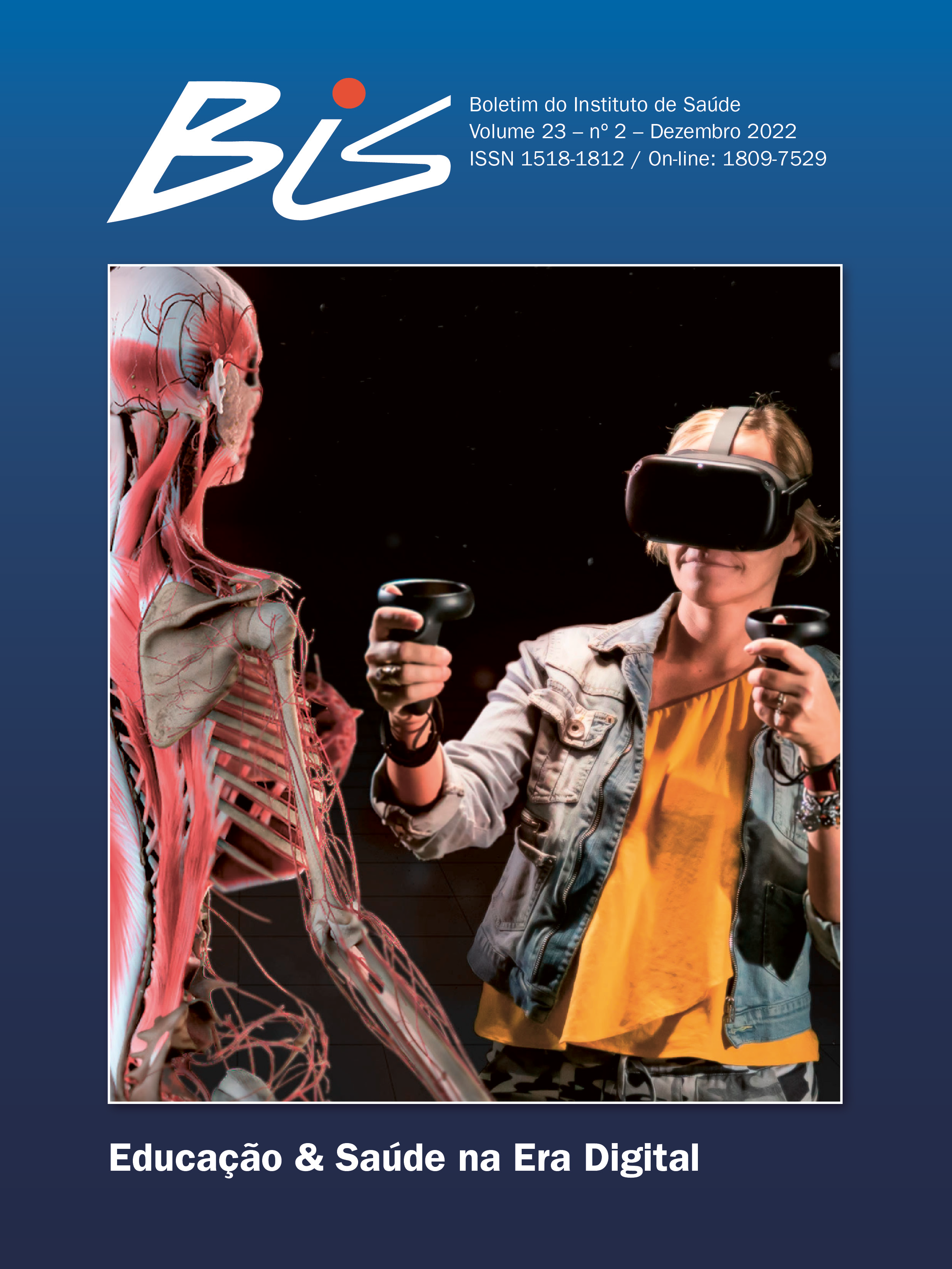Abstract
The challenges brought by the COVID-19 pandemic highlighted the importance of the improvement of communication and education strategies that are carried out in the Brazilian Unified Health System to raise awareness in society about disease prevention. The diagnosis of knowledge, perceptions and attitudes among the public regarding the disease is essential for planning educational and communication interventions. The present study aimed to analyze the knowledge, risk perception and attitudes of young adults (18 to 29 years old) from Franco da Rocha toward COVID-19 and its preventive measures. A cross-sectional, exploratory, quantitative study was carried out, with the participation of 125 individuals who answered a self-completed online questionnaire. The results
suggest that the participants had basic knowledge about the
transmission and prevention of COVID-19, as well as being aware
of their role in the transmission chain. Most respondents agreed
with the importance of social distancing, but they had emotional
and financial difficulties to do it properly.
References
WHO - World Health Organization. Statement on the second meeting of the International Health Regulations (2005) Emergency Committee regarding the outbreak of novel coronavirus (2019-nCoV) [Internet]. 2020 [acesso em 20 maio 2021]. Disponível em: https://www.who.int/news/item/30-01-2020-statement-on-the-second-meetingof-the-international-health-regulations-(2005)-
emergency-committee-regarding-the-outbreak-ofnovel-coronavirus-(2019-ncov).
Burki T. COVID-19 in Latin America. The Lancet Infectious Diseases. 2020; 20: 547-548.
Cowling BJ, Aiello AE. Public health measures to slow community spread of coronavirus disease 2019. J Infect Dis. 2020; 221:1749-51.
Anderson RM, Heesterbeek H, Klinkenberg D, Hollingsworth TD. How will country-based mitigation measures influence the course of the COVID-19 epidemic? Lancet. 2020; 395:931-4.
WHO - World Health Organization. Overview of public health and social measures in the context of COVID-19. Interim guidance. WHO reference number: WHO/2019-nCoV/PHSM_Overview/2020.1 [Internet]. WHO: Geneva; 2020 [acesso em 21 mar 2021].
Disponível em: https://www.who.int/publications/i/item/overview-of-public-health-and-social-measures-inthe-context-of-covid-19.
Oran DP, Topol EJ. The Proportion of SARS-CoV-2 Infections That Are Asymptomatic: A Systematic Review. Ann Intern Med. 2021;174(5):655.
Davies NG, Klepac P, Liu Y, Prem K, Jit M, CMMID COVID-19 working group et al. Age-dependent effects in the transmission and control of COVID-19 epidemics. Nat. Med. 2020; 26: 1205–1211.
Verity R, Okell LC, Dorigatti I, Winskill P, Whittaker C, Imai N. et al. Estimates of the severity of coronavirus disease 2019: a model-based analysis. Lancet Infect. Dis. 2020; 20: 669–677.
Götzinger F, Santiago-García B, Noguera-Julián A, Lanaspa M, Lancella L, Carducci FIC. et al. COVID-19 in children and adolescents in Europe: a multinational, multicentre cohort study. Lancet Child Adolesc. Health. 2020; 4: 653–661.
Dubugras MTB. Princípios e estratégias da Comunicação de Risco. In: Dubugras MTB, Rembischevski P, et al., organizadores. Aplicação da
análise de risco na gestão pública da saúde. São Paulo: Instituto de Saúde; 2021.
Taylor WD, Synder LA. The influence of risk perception on safety: A laboratory study. Safety Science. 2017;95:116-124.
Slovic P. Perception of risk. Science. 1987;236:280-285.
Cho H, Reimer T, McComas KA, editores. The SAGE Handbook of Risk Communication. London: Sage Publications Inc; 2014.
Dyregrov A, Fjærestad A, Gjestad R, Thimm J. Young people’s risk perception and experience in connection with COVID-19. Journal of Loss and Trauma. 2021;26(7):597-610.
IBOPE - Instituto Brasileiro de Opinião Pública e Estatística. Pesquisa de opinião pública: Viver em São Paulo - JOB0181‐1/2020: COVID-19
[Internet]. [acesso em 10 set 2021]. Disponível em: https://www.nossasaopaulo.org.br/wp-content/uploads/2020/05/ViverEmSP-EspecialPandemia-2020-completa.pdf.
CONJUVE - Conselho Nacional de Juventude. Pesquisa Juventudes e a Pandemia do Coronavírus: Relatório de Resultados. Junho de 2020
[Internet]. Brasília(DF);2020 [acesso em 10 set 2021]. Disponível em: https://4fa1d1bc-0675-4684-8ee9-031db9be0aab.filesusr.com/ugd/
f0d618_41b201dbab994b44b00aabca41f971bb.pdf.
Brasil. Ministério da Saúde. Conselho Nacional de Saúde. Resolução no. 466, de 12 de dezembro de 2012. Trata sobre as diretrizes e normas regulamentadoras de pesquisa envolvendo seres humanos. Diário Oficial da União. 13 jun 2013;Seção 1.
Brasil. Ministério da Saúde. Conselho Nacional de Saúde. Resolução no. 510, de 7 de abril de 2016. Trata sobre as diretrizes e normas regulamentadoras de pesquisa em ciências humanas e sociais. Diário Oficial da União. 24 maio 2016; Seção: 1:44.
Bardin L. Análise de conteúdo. Lisboa: Edições 70;2011.
IBGE - Instituto Brasileiro de Geografia e Estatística. Censo Demográfico 2010 [Internet]. 2010 [acesso em 22 jul 2021]. Disponível em: www.ibge.gov.br.
IBGE - Instituto Brasileiro de Geografia e Estatística. Franco da Rocha [Internet]. Brasília: 2020 [acesso em 22 jul 2021]. Disponível em: https://cidades.ibge.gov.br/brasil/sp/franco-da-rocha/panorama.
SEADE - Fundação Sistema Estadual de Análise de Dados. Boletim Completo SP contra o coronavírus. 2021. [acesso em 15 jan 2022]. Disponível em: https://iprs.seade.gov.br/coronavirus/.
Huang C, Wang Y, Li X, et al. Clinical features of patients infected with 2019 novel coronavirus in Wuhan, China. Lancet. 2020;395:497-506.
Covello VT, Allen FW. Seven cardinal rules of risk communication. Washington(DF): Environmental Protection Agency, Office of Policy Analysis;1988.
Chartier J, Gabler S. Risk communication and government: theory and application for the Canadian Food Inspection Agency. Ottawa: Canadian Food Inspection Agency; 2001.
Malta DC, Gomes CS, Szwarcwald CL, Barros MBA, Silva AG, Prates EJS et al. Distanciamento social, sentimento de tristeza e estilos de vida da população brasileira durante a pandemia de COVID-19. Saúde em Debate [Internet]. 2020 [acesso em 20 out 2021]; 44; 4:177-190. Disponível em: https://doi.org/10.1590/0103-11042020E411.
Marim GA, Bianchin JM, Caetano IRA, Cavicchioli FL. Depressão e efeitos da COVID-19 em universitários. Inter Am J Med Health. 2021;4:e202101014.
Barcelos TN, Muniz LN, Dantas DM, Cotrim Junior DF, Cavalcante JR, Faerstein E. Análise de fake news veiculadas durante a pandemia de COVID-19 no Brasil. Revista Panamericana de Salud Pública [Internet]. 2021 [acesso em 20 out 2021], 45: e65. Disponível em: https://iris.paho.org/handle/10665.2/53907.
Fonseca MN, Ferentz LMS, Cobre AF, Momade DRO, Garcias CM. Avaliação do nível de percepção dos riscos de infecção pelo SARS-CoV-2 e da acessibilidade a informações sobre a Covid-19 no Brasil. Revista Eletrônica de Comunicação, Informação & Inovação em Saúde [Internet]. 2021[acesso em 20 out 2021]; 15(2): 379-396. Disponível em: https:// www.reciis.icict.fiocruz.br/index.php/reciis/article/
view/2157/2445
Kickbusch I. The need for a European strategy on global health. Scandinavian Journal of Public Health. 2006.34(6): 561-565.

This work is licensed under a Creative Commons Attribution 4.0 International License.
Copyright (c) 2023 Thiago Schaffer Carvalho, Maria Thereza Bonilha Dubugras, Janaina Aparecida Covas
